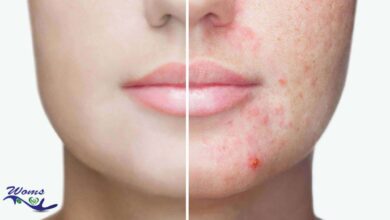How To get Fiberglass Out of Skin? 6 easy and effective ways

The question How to get Fiberglass Out of Skin is asked a lot. Fiberglass is a glass fiber-based artificial or manufactured product. It’s a regular way for people to insulate their houses. When insulating specialists and others make, set up, deploy, and try to get rid of fiberglass, it can hurt the ecosystems.
You may have pain, itchiness, skin irritation, sneezing, and gasping after being exposed. If you’ve recently been exposed to fiberglass and suspect it’s in your skin, you should remove it straight away and consult a doctor for further instructions.
While physical contact fiberglass is unlikely to have long-term health consequences, it might induce extreme irritation, redness, or a skin infection. As a result, it’s critical to get fiberglass off your body as soon as possible so it doesn’t get into your eyes, nostrils, or mouth. In this article we present you easy yet effective ways on How to get Fiberglass Out of Skin.
Do not massage or scrape the region if you have come into contact with fiberglass pieces or if you have dermatitis and itching after being subjected to fiberglass. To extract the glass fibers off your body, quickly rinse the injured part with warm water and mild detergent, then dry it with a towel.
Fiberglass particles may be visible in your body on occasion. After you’ve cleaned the spot, place a small strip of sticky tape across the fiberglass-exposed region and peel off the shards with the tape. Bath as soon as possible to remove any remaining remnants of fiberglass that may have come into contact with your body.
What Is The Function Of Fiberglass?
Fiberglass is the most popular type of insulation, and it’s utilized in a variety of applications, such as:
- Insulation for homes and buildings.
- Insulation from electricity.
- Insulation for the plumbing system
- Sound waves insulation.
- Insulation for ventilation ducts
It can also be found in:
- Filters for furnaces
- Roofing supplies
- Ceiling tiles and ceilings.
Reduce The Chances Of Being Exposed To Fiberglass
You may not even need to ask how to get fiberglass out of skin if you remain unexposed yo it. Most roofing, insulating, and thermal components, particularly in older structures, may comprise fiberglass. If you are less exposed then you have to less care about How to get fiberglass out of skin.
You may have been subjected to particles of fiberglass in your skin while working on a building project and are experiencing itching or discomfort on your body. That’s probably why you are here to know how to get fiberglass out of skin. To reduce your chances of being exposed to fiberglass in the workplace, try the following:
- Allow the worksite entrance and windows to open to improve ventilation and reduce fiberglass particle contact.
- Wear large, full-coverage apparel to protect your body. When dealing with fiberglass products, always use gloves, closed-toe boots, eye shields, and helmets.
- After exposure, clean the dress you wore on the worksite straight away. To reduce the development of fiberglass fragments, always clean work clothing separately from other outfits. After you’ve washed your work clothing, properly clean your washing machine.
- Before you eat, drink, or smoke, rinse your hands thoroughly. Keep food and drinks out of the space where fiberglass particles are present.
- To eliminate fiberglass particles, moisten the floors and sweep with a HEPA filter. Fiberglass particles should never be swept dry.
How to Get Fiberglass Out of Skin?
You might have been exposed to fibreglass dust due to various reasons. Fibreglass dust can enter the skin due to direct contact, or you work in an environment exposed to fibreglass. Whatever the cause, you must have experienced irritation, itching, or rash due to fibreglass. This article will discuss some helpful methods on how to get fiberglass out of skin and tips to prevent fibreglass from getting into your skin.
1. Use a Heavy and Sticky Tape
It may sound bizarre, but the tape works perfectly fine while removing fibreglass from the skin. Apply tape to the affected areas and rip it off immediately. The tape will pull fibreglass out from your skin. Ensure that you have a flashlight and a magnifying glass to see the embedded fibreglass in your skin. This is a really good way on how to get fiberglass out of skin.
2. Try Epsom Salt to Remove Fiberglass from Skin
Take a cup of Epsom salt and add to water. Add this mixture to water and take a bath. You can dip your affected area into it. Once you suspect fibreglass has been removed, take a bath with cold water for better results. It is an effective method on how to get fiberglass out of skin.
3. Take Shower with Hot and Cold Water
It is advisable to take an alternate hot and cold shower to remove fibreglass from the skin. Hot water opens pores, and cold water closes the poses, which makes it easier to get fibreglass out from your skin. This method is workable in mild conditions for how to get fiberglass out of skin.
4. Use Tweezers to Pluck fibreglass
Tweezers are used to pluck eyebrows, but you can use them to pull fibreglass out from your skin. Make sure to use a flashlight while plucking fibreglass from the skin.
5. Rub Apple Cider Vinegar
If you have applied the above methods and the results are not as expected. Try apple cider vinegar because it dissolves fibreglass. Many people have reported relief after the use of apple cider vinegar. This is yet another effective way on how to get fiberglass out of skin.
6. Try Lint Roller
Roll over the lint roller on the affected area. It helps in reducing itching and irritation. It may not completely help on how to get fiberglass out of skin but can provide some relief.
Examine your skin for inflammation after working with fiberglass or undertaking any house modifications. You may have come into contact with fiberglass if a reddish, itchy rash appears on the body surface. Take the following actions:
- To avoid inhaling fiberglass fibers or getting fiberglass in you skin, always exit the worksite.
- Wear PPE (Personal Protective Equipment) if you work in a fibreglass environment.
- Wear goggles to protect your eyes and a dust mask to prevent fibreglass dust from getting into your throat.
- Make sure to open doors and windows for better ventilation, which will minimize the chances of fibreglass dust in place.
- Wash the clothes which you wear at your workplace. Do not wash these clothes with other clothes.
- Do not place food or drink in an environment with fibreglass dust.
- Always wear gloves while working and wash your hands properly before eating or drinking.
- Apply a gentle cleanser and cold water to the affected area right away. The quicker you can remove the fiberglass, the less aggravation you’ll experience. Never use heated or warm water because it can expose your pores and encourage the fiberglass to penetrate further into your flesh.
- If bigger pieces of fiberglass are visible, carefully remove them with a cold hand towel or by putting and pulling sticky tape to your body.
- Take your dress and clean it separately from other clothes after you’ve cleaned the spot.
- If you scratch or massage injured skin, the fiberglass will expand and induce more inflammation.
- If you’re worried about fiberglass fibers getting into your eyes, rinse them for at minimum 15 mins with safe water. It’s also possible that your organization has an eyewash solution.
- Consult your medical professional if you continue to have itchiness or pain.
Using Epsom salts to try to draw the particles out of your skin is another effective approach for getting fiberglass out of your flesh. Add one cup of Epsom salt into a moderate volume of hot water to achieve this. This may assist in how to get fiberglass out of skin.
Leave the salt to melt in the hot water before placing the mixture in a warm bath. Soak the afflicted skin parts for at least Thirty minutes in an Epsom salt tub. Wash your skin gently with cool water to eliminate any strands that may have remained on the skin.
After using the above tips you will find the answer to How to get fiberglass out of skin.
The Dangers Of Fiberglass Exposure To One’s Health
Although removing fiberglass from skin is difficult, failing to do so can be harmful to your well-being. Frequent contact with fiberglass, if left untreated, can cause skin irritation or fiberglass rash which can result in an allergic reaction or fiberglass rash. This is why the topic of how to get fiberglass out of skin becomes important. If you discover that your blotches from fiberglass exposure are worsening, see your physician right away.
Fiberglass can readily move from your hand to your eyeballs, nostrils, mouth, or other areas of your system, posing a greater health risk. If you suspect you’ve ingested fiberglass in any of these places, take immediate action to remove the particles and seek medical attention.
When checking the vulnerable part of your body, you may inhale fiberglass. If you inhale fiberglass, you may get discomfort in your respiratory tract, as well as sneezing, struggling to breathe, breathing difficulties, and nose bleeding.
In patients who have asthma or cough, these effects are usually aggravated. Dusty sweeping, poor airflow, and not wearing shades can all contribute to fiberglass exposure.
If fiberglass powder gets into your eyes through your fingers or the wind, it can be very irritating. If fiberglass gets into your eyes, rinse them out for fifteen minutes with clean water or an eyewash facility.
To remove particles from around your eye, raise your upper and lower eyelids. Even after removing the fiberglass from the open surface, redness, irritation, stinging, and pain may persist. However, long-term consequences from fiberglass exposure are uncommon.
Fiberglass Hazards
Working with fiberglass has several hazards, but most of them are temporary, and effects should go away once the fiberglass is eliminated. The long-term consequences of fiberglass exposure are little understood.
1. Skin pain
You may develop a reddish, stinging rash called contact dermatitis if fiberglass fibers become trapped in your flesh. This commonly happens to any skin that has been exposed to fiberglass while working with it. The most prevalent type of industrial skin ailment is contact dermatitis, which is formed by itchiness induced by contact with an inflammatory condition. Skin peeling and tiny sores or boils can also be caused by fiberglass exposure.
2. Respiratory Issues
Exposure to fiberglass can also cause respiratory problems. When fiberglass is breathed, bigger dust can become caught in the throat, while smaller particles can migrate to the lungs and settle there.
This might cause breathing problems, wheezing, itching, and asthma symptoms to intensify. Fiberglass is normally removed by bowel movements after it enters the gastrointestinal tract. It’s an excellent option to see your doctor if you’ve observed any of these signs after working with fiberglass.
Also, read Heavy Cream Nutrition Facts.
Conclusion
Fiberglass in your skin can cause inflammation that is both painful and uncomfortable. Do not massage or scrape your body if it has been exposed to fiberglass. Using a gentle cleanser and clean water, clean the affected area.
You can also remove the strands using a washcloth. If you observe fibers emerging from the skin, wrap and peel the adhesive gently so the fibers attach to the tape and are drawn out of the skin. Consult a physician if the pain persists.
We hope this article has helped you with How to get Fiberglass Out of Skin. If this article about How to get Fiberglass out of skin has helped then do share it with others too.
FAQs
Is It Possible To Die By Inhaling Fiberglass?
Fiberglass is hazardous since it is produced from glass fibers. When you breathe them into your airways, they are difficult for your body to absorb. To avoid mortality in the event of inhaling glass fibers, always use a helmet or mask to prevent the particle from passing through your mouth and into your respiratory system.
Is There Asbestos In Fiberglass?
Asbestos is not present in any fiberglass insulation batts. Because this wool-like substance is made of glass fibers, it usually does not contain asbestos. Asbestos is an organic fiber present in rocks, whereas this is an artificial material.
Is Fiberglass a Poisonous Substance?
The one universally agreed-upon reality is that fiberglass is irritating, as seen by the pink insulation commonly found in homes. Skin discomfort, such as burning and itching, as well as difficulties seeing and inhaling, can result from exposure to insulation wool fiberglass.
Is It Possible To Get Cancer From Insulation?
The insulation’s particles might break easily and stick to your skin, as well as your nostrils, throat, and eyes, according to its structure. It doesn’t cause cancer, but it can cause inflammation of the body, nose, eyes, and airways if you contact it or are exposed to it for longer time frames at close range.
What Is The Impact Of Fiberglass On Your Lungs?
Fiberglass fibers in the air can be severely trapped in the lungs, posing severe disorders such as Asthma. A construction worker’s asthma can deteriorate over time if he or she is exposed to fiberglass insulation regularly. Inhaling fiberglass particles can potentially set up asthma attacks.




